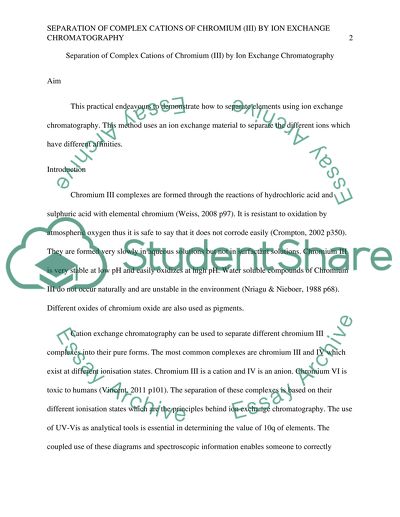Retrieved from https://studentshare.org/health-sciences-medicine/1612911-separation-of-complex-cations-of-chromiumiii-by-ion-exchange-chromatography
https://studentshare.org/health-sciences-medicine/1612911-separation-of-complex-cations-of-chromiumiii-by-ion-exchange-chromatography.


